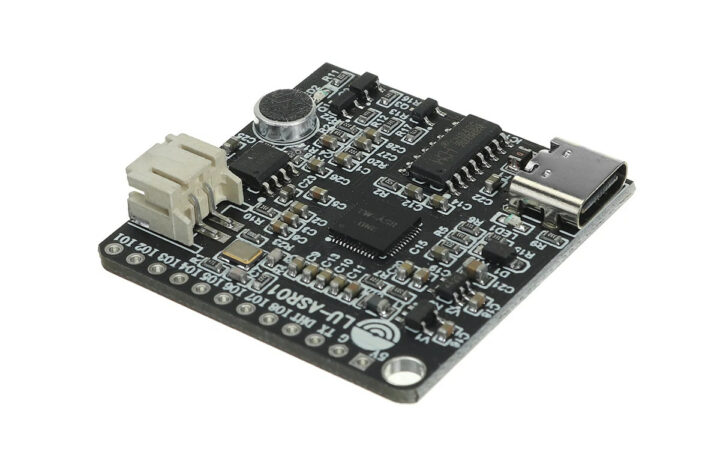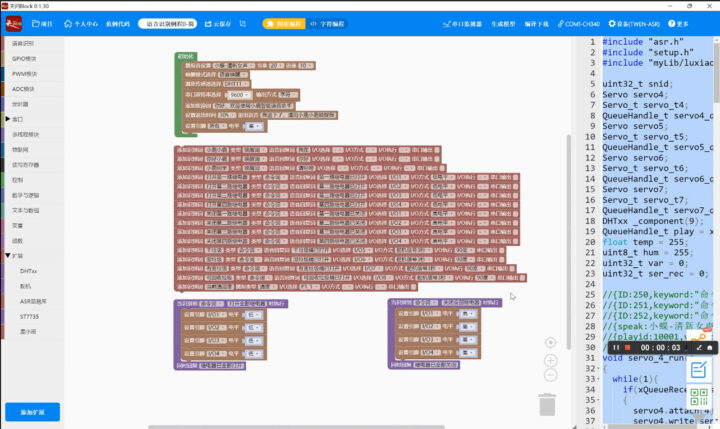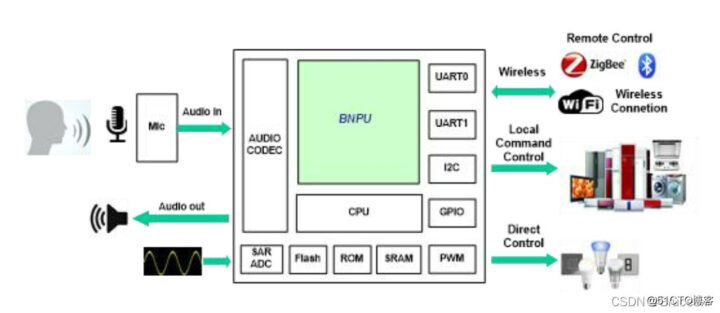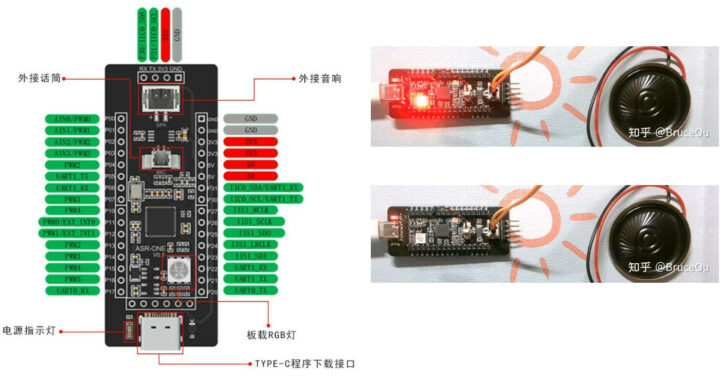LU-ASR01 is a board capable of offline speech recognition with a built-in microphone, a speaker connector, twelve through holes for GPIOs and a temperature sensor interface for DHT11/DS18B20, plus a USB Type-C port for power and programming.
At first, I thought it might be based on the Unisound US516P6 microcontroller which we’ve seen on some inexpensive offline speech recognition modules, but the chip looks completely different, with the marking TW-ASR ONE. So let’s investigate…
 LU-ASR01 board specifications took some effort, but here’s what I’ve managed:
LU-ASR01 board specifications took some effort, but here’s what I’ve managed:
- MCU – TW-ASR ONE (aka TWen ASR ONE) microcontroller with 4MB flash, 512KB RAM, and a BNPU for voice processing; package: QFN48L (6x6x0.85mm)
- Audio I/O
- Built-in microphone
- 2-pin speaker header plus 3W power amplifier for 4Ω/3W speaker
- Voice recognition
- Up to 10 meters wake-up range
- 98% ultra-high recognition rate
- Customizable to 5 wake-up words and 200 recognition words
- USB – 1x USB Type-C port for power and programming via CH340C USB to TTL chip
- Expansion – 12x through holes with 8x GPIOs, of which 6 can be used as PWM, one serial Tx, one DHT11/DS18B20 temperature sensor interface
- Dimensions – About 3.7 x 3.7 cm
- Weight – 35g

Everything is done within this interface including defining wake words and voice commands, monitoring the temperatures, and controlling I/Os, in the sample above some servos. The program is then built and flashed to the board over USB. It’s also possible to directly modify the source code generated from Blockly. At this point, I don’t know if it supports languages other than Mandarin.
If you were to go ahead and give it a try, you may want to check out a 5-part tutorial on Zhihu social network, again in Chinese, that’s more detailed than the information in the RAR file, and in text form, so using machine translation is easier… I could also find a simplified block diagram of the ASR ONE microcontroller as well, and learned that the system runs FreeRTOS.
Note that the review is using another ASR ONE v0.1 board that looks more like a NodeMCU board, but I could not find it for sale.
The LU-ASR01 offline speech recognition board is available now and sold on Banggood for $7.99 including shipping, and you’ll also find it on Aliexpress. Some other shops list it as an upgrade to VRM LD3320 board based on LD3320A and usually selling for over $20.

Jean-Luc started CNX Software in 2010 as a part-time endeavor, before quitting his job as a software engineering manager, and starting to write daily news, and reviews full time later in 2011.
Support CNX Software! Donate via cryptocurrencies, become a Patron on Patreon, or purchase goods on Amazon or Aliexpress






